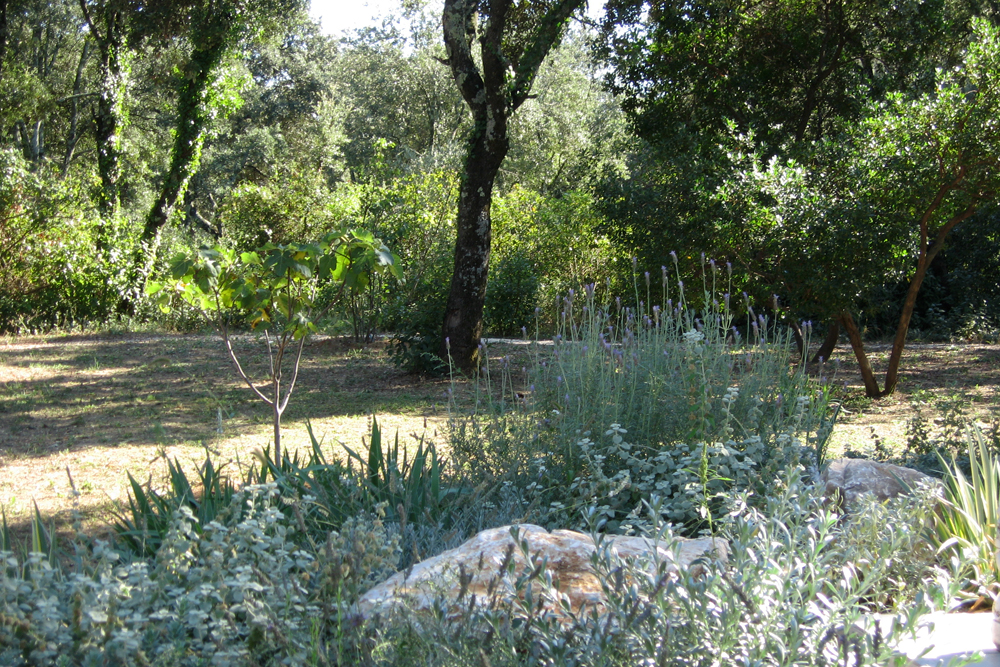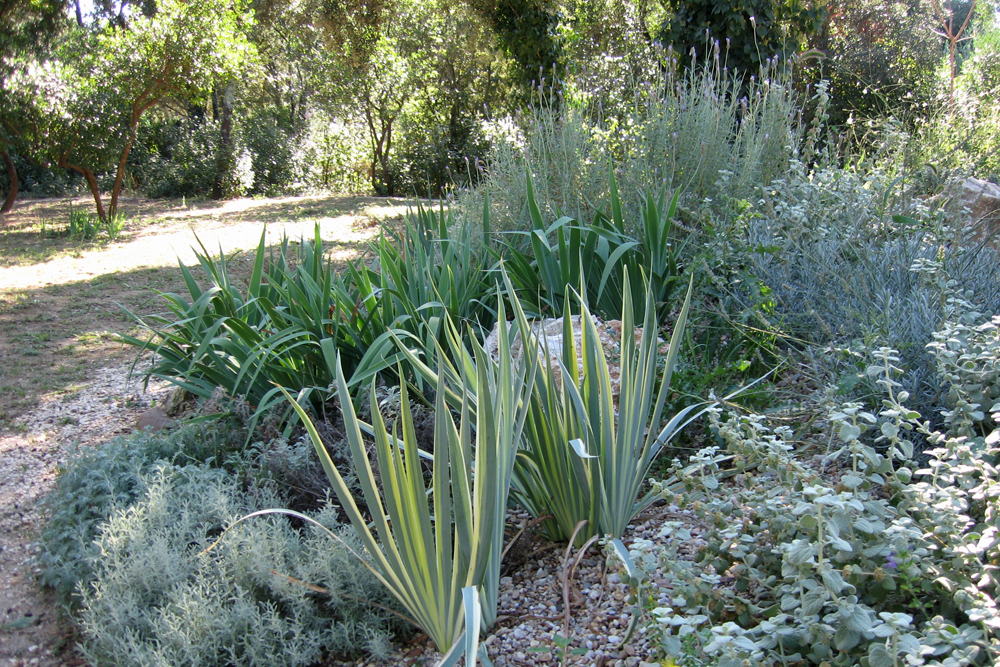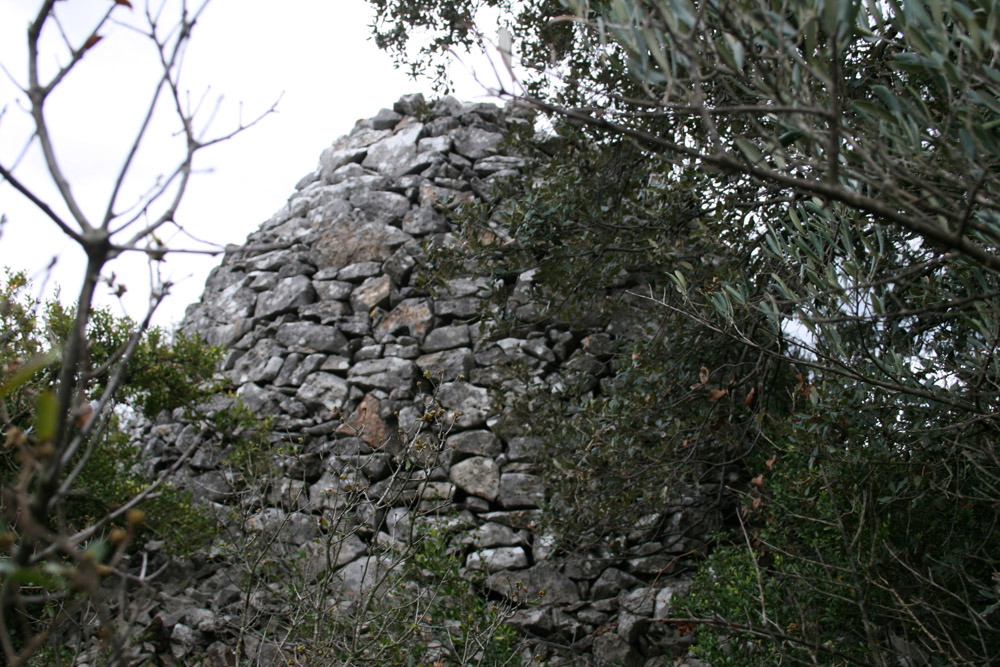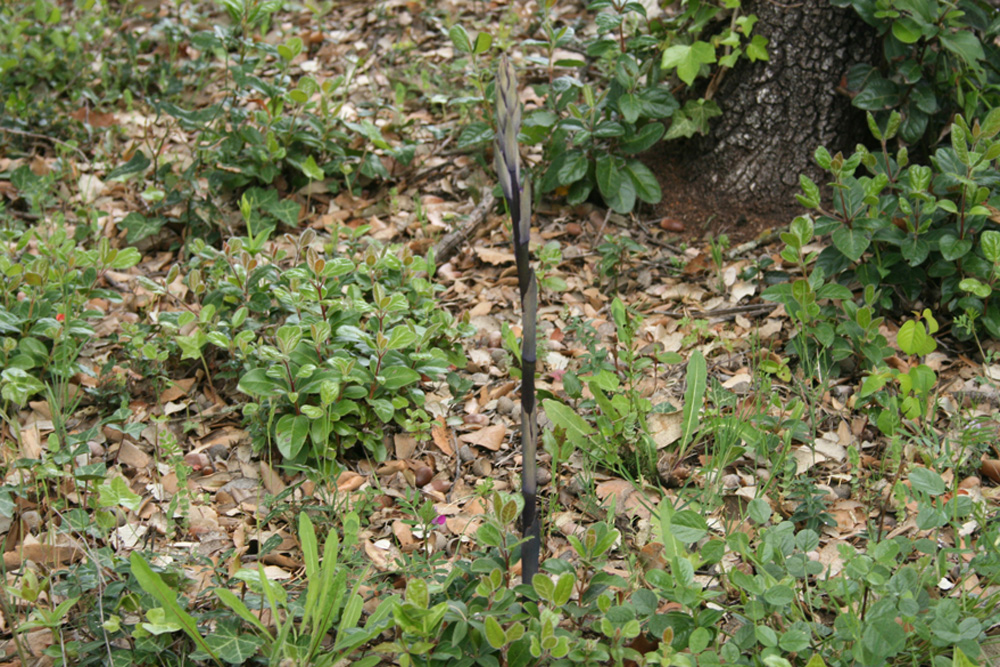April 2012 – A visit to the garden of Jocelyn van Riemsdijk and a walk in the garrigue
Jocelyn welcomed a group of about 25 members to her garden and gave us a brief history of the two years that she has owned it. In early 2010 a group of MGS members surveyed the land and proposed possible designs.
The chosen plan included a continuous path around the garden and a paved terrace behind the house with a south-west facing, sloping bank with walls and steps down either side to the path.
A builder was employed to create the path and terrace and Jocelyn talked about the importance of good preparation. The path’s foundation was made with crushed rock gravel, then a layer of geo-textile and finally a covering of well-compacted fine gravel. The natural soil in the garden is heavy red clay over rock, so for the sloping bank linking the terrace and the main garden new lighter soil was brought in and mixed with river sand.
In October 2010 a group of branch members visited to put the plants in and at the time there was concern that the soil might wash away in heavy rain. However, it held firm and was subsequently mulched with medium (15/25) gravel. The clay soil appears to have been a fortunate choice as the bank needed to be watered only three times in 2011.
To the north-west of the path the land remains much as it was when Jocelyn arrived, with a mixture of local vegetation including Quercus ilex, Arbutus unedo and Viburnum tinus. The central area has had some trees planted in it, including a fig, an almond and an Acer monspessulanum. An Albizia julibrissin did not survive and was replaced by a quince.
The eastern edge of the garden has been developed with plants from the mountainous monsoon area of China: Rosa chinensis, buddleja and photinia. Although these plants can manage with very little water, they are watered twice a week in very dry weather in order to produce large flowers to delight the butterflies.
A walk in the garrigue
After lunch we walked through the garrigue to a magnificent viewpoint, en route passing several capitelles, drystone dwellings constructed in the 18th century.
There were fewer wild flowers than normal for this time of year, but we did see Cistus albidus, Iris lutescens subsp. lutescens (syn. Iris chamaeiris) and one member of the orchid family, the violet-coloured Limodorum abortivum.
Text and photographs: Ann Killingback and Michael Pritchard
![]()





